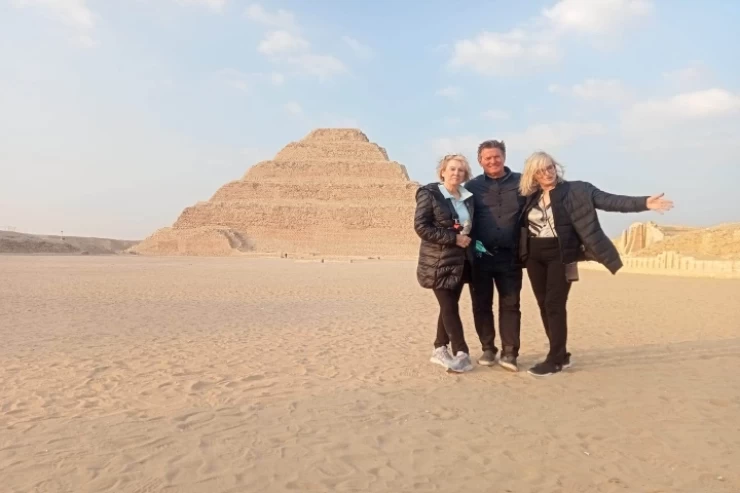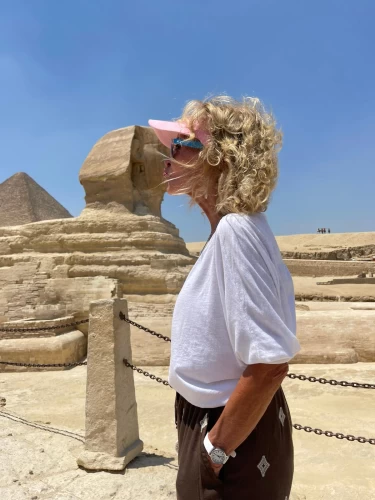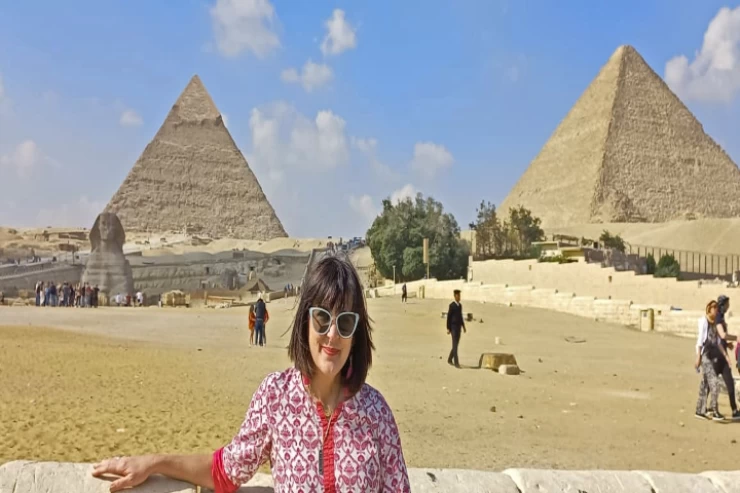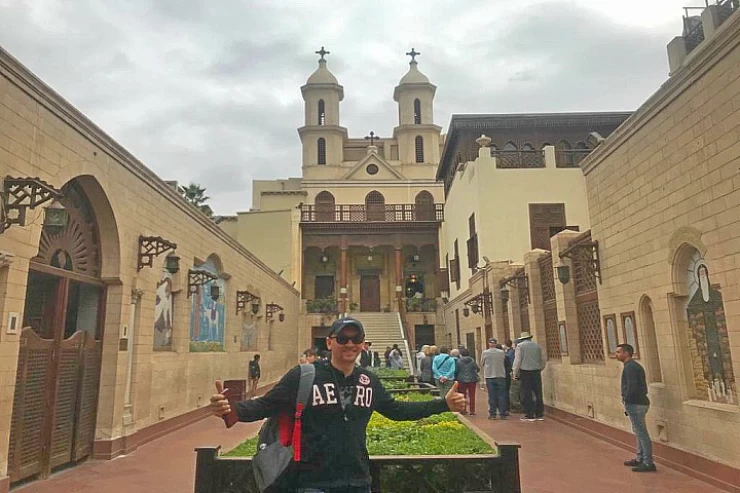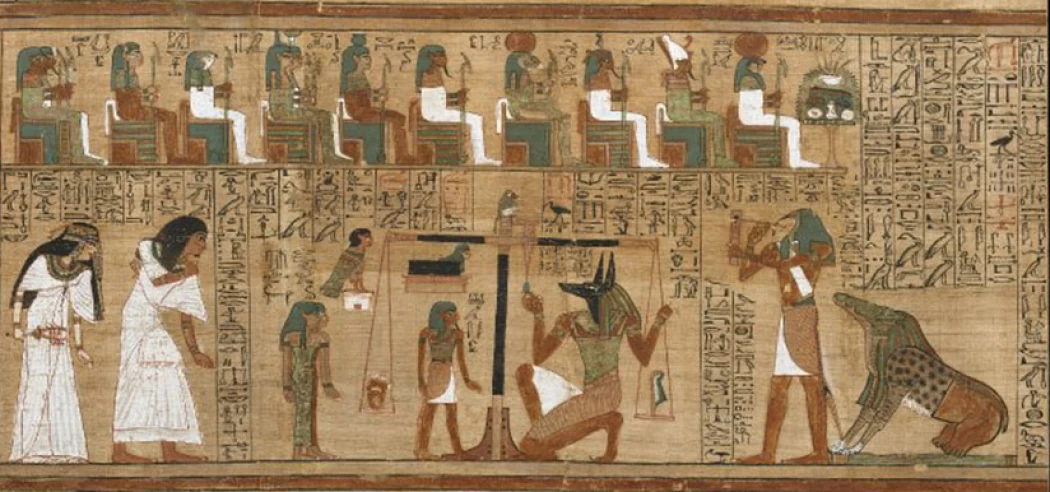
Religion in Ägypten
Religion in Ägypten
Sind Sie vollständig geimpft? Dann müssen Sie bei Ihrer Ankunft am internationalen Flughafen von Kairo keinen PCR-Test vorlegen, um einen einmaligen Urlaub im Land der Pharaonen zu genießen.
Die Religion in Ägypten kontrolliert viele Aspekte des sozialen Lebens und ist gesetzlich gebilligt.
Die Staatsreligion Ägyptens ist der Islam. Obwohl die Schätzungen ohne offizielle Statistiken stark variieren.
Seit der Volkszählung von 2006 und damit verfügbaren Statistiken handelt es sich um Schätzungen religiöser und nichtstaatlicher Stellen. Das Land ist mehrheitlich sunnitisch-muslimisch (mit Schätzungen zwischen 80% und 94%), wobei die nächstgrößte religiöse Gruppe koptische Christen sind (mit Schätzungen zwischen 6% und 20%). Die genauen Zahlen sind umstritten, wobei Christen behaupten, dass sie in bestehenden Volkszählungen systematisch unterzählt wurden.
Ägypten erhält zwei der wichtigsten religiösen Institutionen. Die koptisch-orthodoxe Kirche wurde in Alexandria gegründet, die Mitte des ersten Jahrhunderts von Markus gegründet wurde. Die Al-Azhar-Moschee wurde 970 n. Chr. Von den Fatimiden als erste islamische Universität in Ägypten gegründet.
Muslime und Christen Teilen Sie in Ägypten eine gemeinsame Geschichte, nationale Identifikation, ethnische Zugehörigkeit, Gesellschaft, Kultur und Sprache.
Zu den üblichen religiösen Sehenswürdigkeiten in Ägypten gehört die Moschee neben der Kirche, die 2002 unter der Regierung von Mubarak (7. Januar) anlässlich von Weihnachten in Ägypten als offizieller Feiertag angesehen wurde, obwohl Christen das Minimum an Strafverfolgung und staatlicher Sicherheit darstellen und öffentliche Funktionen Und davon, in der Belegschaft aufgrund ihrer Religion diskriminiert zu werden.
Beziehungen zur koptischen Minderheit
Koptische Christen, die die ältesten Religionen in Ägypten repräsentieren, sind nach dem Eintritt in die islamische Eroberung Ägyptens zur größten ethnischen und religiösen Minderheit in Ägypten geworden und sind jetzt stärker von Gesetzen betroffen, die zwischen ihnen diskriminieren können.
Die Kopten in Ägypten waren nach dem Staatsstreich von 1952 unter der Führung von Gamal Abdel Nasser einer zunehmenden Marginalisierung ausgesetzt. Bis vor kurzem mussten Christen auch für kleinere Kirchenreformen die Zustimmung des Präsidenten einholen.
Obwohl das Gesetz im Jahr 2005 durch die Übergabe der Befugnis zur Genehmigung von Herrschern gelockert wurde, stehen Kopten beim Bau neuer Kirchen nicht mehr vor Hindernissen.
Alte ägyptische Religion , Die altägyptische Religion mit ihrem komplexen System von Überzeugungen und Ritualen war ein wesentlicher Bestandteil der altägyptischen Gesellschaft. Sie betete über die Interaktion der Ägypter mit vielen Gottheiten, von denen angenommen wird, dass sie in der Welt existieren und diese kontrollieren, wo Rituale wie Gebet und Opfergaben den Gottheiten präsentiert wurden, um ihre Befriedigung zu erlangen. Eine der offiziellen religiösen Praktiken, die sich auf die Pharaonen konzentrierten, waren die Herrscher Ägyptens, wo er glaubte, durch ihre Position göttliche Macht zu besitzen.
Sie fungierten als Vermittler zwischen ihrem Volk und den Göttern und waren verpflichtet, die Götter des alten Ägypten durch Rituale und Aufführungen zu bewahren, damit sie ihr Eigentum und ihren Status bewahren konnten, da der alte Staat enorme Ressourcen für religiöse Rituale und den Bau von Tempeln bereitstellte der pharaonische Gott.
Einzelpersonen durften für ihre eigenen Zwecke mit den Gottheiten kommunizieren und durch Gebet um Hilfe bitten oder die Gottheiten zwingen, durch Magie zu handeln.
Diese Praktiken unterschieden sich von Ritualen und formalen Institutionen, waren aber eng mit ihnen verbunden. Die berühmte religiöse Tradition hat in der gesamten ägyptischen Geschichte an Bedeutung gewonnen, da der Status des Pharaos abgenommen hat.
Der ägyptische Glaube an das Leben nach dem Tod und die Bedeutung von Bestattungspraktiken zeigt sich in den großen Anstrengungen, die unternommen werden, um sicherzustellen, dass ihr Leben nach dem Tod erhalten bleibt - durch die Bereitstellung von Gräbern und massiven Gütern sowie durch Angebote zur Erhaltung der Leichen und Seelen des Verstorbenen und seines Eigentums.
Die Details des religiösen Glaubens änderten sich im Laufe der Zeit, als die Wurzeln der Religion bis in die prähistorische Zeit in Ägypten zurückreichen und mehr als 3000 Jahre andauerten, als die Bedeutung bestimmter Gottheiten zunahm und abnahm und sich ihre komplexen Beziehungen zu bestimmten Zeiten änderten und deshalb wurden einige Gottheiten für andere bekannt, darunter Das ist der Sonnengott Ra, der Schöpfergott Amun und die Muttergöttin Isis.
Für kurze Zeit wurde in der Theologie des Pharaos Echnaton, der heute seine Hauptstadt nach Tel El Amarna in El Minya verlegte, ein neuer Gott befördert, Aten, der das traditionelle Pantheon ersetzte. Die altägyptische Religion und Legenden hinterließen viele andere Schriften und Denkmäler als die großen Einflüsse auf alte und moderne Kulturen.
Das alte ägyptische Volk, das von den Naturphänomenen umgeben ist und von seiner Existenz abhängt, hat um sich herum göttliche Kräfte empfangen, die die kosmischen Elemente bewohnen, auf denen die Erde, der Himmel, der Äther und die Flut des Nils sowie die Sonne und Mond. Diese Kräfte,
die in menschlichen Körpern verkörpert waren, kristallisierten viele kosmische Gottheiten von allgemeiner Bedeutung für alle, in dem Maße, dass diese Gottheiten in ihren Ursprüngen nicht mehr mit irgendeiner Region oder Stadt im Land verbunden sind, weil sie an jedem Ort vorhanden waren Keine Notwendigkeit für eine organisierte Form eines Glaubensbekenntnisses oder eines bestimmten lokalen Te.
Erleben Sie den Zauber Ägyptens, wo alles beginnt, mit dem professionellen Team von Cairo Top Tours. Starten Sie jetzt Ihr Abenteuer und erleben Sie den besten Urlaub in Ägypten. Sie finden hier die besten Ägypten-Osterangebote und -Urlaube 2022.
Der Frühling in Ägypten ist perfekt und die Atmosphäre ist unsagbar schön. Wir organisieren tolle und unterhaltsame Ägypten Ausflüge wie Kairo Tagestouren. Schauen Sie sich unsere Ausflüge und Reisen mit angemessenen Preisen an, die für alle Arten von Touristen im Jahr 2022 geeignet sind, sowie Ägypten Landausflüge, zusätzlich zu Kairo Tagestouren vom Flughafen und Kairo Zwischenlandung Tour.
Sie können das antike Theben erkunden, beginnend mit dem Tal der Könige und dem Westufer von Luxor, sowie den Karnak-Tempel und den Luxor-Tempel. Ägypten Touren erweitern, um den Tempel von Edfu von Gott Horus der Falke, und Kom Ombo Tempel und Abu Simbel zu decken. All dies während Assuan-Tagestouren und Luxor-Tagestouren.
Das Rote Meer ist einer der malerischsten Orte, die Sie in Ägypten besuchen können, genießen Sie einige Meeresabenteuer und Wanderaktivitäten wie Hurghada Tagestouren und Sharm El Sheikh Ausflüge. Sichern Sie sich jetzt Ihren Platz in unseren Ägypten-Reisepaketen und Wüstensafari-Trips, um von Kairo aus die Oasen Siwa, Bahriya und Farafra sowie die Oasen Dakhla und Kharga zu bereisen! Wir sehen uns wieder.
If Egypt has often been referenced by historians as ‘the Cradle of Civilization’, it has probably one of the most complicated religious aspects in entire human history. The fertile banks of the Nile did host agriculture, but they also produced a vast culture, where religion permeated every single aspect of everyday life, politics, and social order. From the earliest days of ancient Egyptian civilization up to this day, despite being primarily a desert dry land, Egypt has been a melting pot of different religions, starting from polygamy to finally embracing monotheism.
In this piece, Section II, How We Were: Reflections on Egyptian History, From Ancient Polytheism to Christianity & Islam, will be reviewed and analyzed, as well as the role of religion in the lives of the Egyptian population.
As a society, it can be said that religion was the foundation of ancient Egypt. The ancient Egyptians worshiped as they knew that everything from the annual flooding of the Nile to the cycle of life and death was not only natural but controlled by some divine power. This was a belief characterized by a multiplicity of deities, all of whom were in charge of a specific facet of existence and/or nature.
The Major Gods and Goddesses
Ra (or Re): Revered as the God of the Sun, Ra has been depicted as the most potent deity in ancient Egyptian religion. It was believed that Ra inhabited the sky during the day, providing light to the earth, and resided in the underworld at night. He would oftentimes be portrayed with a falcon’s head and wear a sun disk on top of his head.
Osiris: Osiris was an Egyptian death and resurrection god and held a significant place in Egyptian mythology in representing the concept of life as a cycle of birth, death, and resurrection. The Osiris myth and his resurrection, in the capable hands of Isis, his wife, became the pillars of the Egyptian afterlife experience.
The goddess was immensely popular and powerful. She was a protector of motherhood, magic, and fertility. Her protective aspect and the ability to bring Osiris back to life made her worshiped.
Horus, the god of the sky and of the king, is often shown as a hawk. He was also known because of his rivalry with the chaos god Set for dominion over the land of Egypt, which represents the struggle of order and chaos.
Anubis is the Egyptian god associated with funerary rites and the protection of the dead. He had the important task of supervising the ceremony of the heart's weighing, which assessed a person’s spirit in the next world.
The gods were not distant or abstract figures; they were present in every facet of life. Egyptians built temples across the country, conducted elaborate rituals, and offered daily prayers and sacrifices to ensure the favor of the gods and maintain ma’at—harmony and order.
Worship wasn’t the only reason for building temples; these structures were believed to be the earthly homes of the gods. The pharaohs had enormous temples like Karnak and Luxor built to worship and carry out rituals for the gods as well as to showcase the power of their rule over the land. No one was permitted to enter the temple’s most sacred, innermost areas except for the priests, who were thought to be the only ones capable of interacting with the gods.
Priests offered meals, incense, and prayers to the gods on a daily basis, performing their duties towards ensuring the gods’ continuous provision of security over the land of Egypt. These clergymen were very powerful and at times even had political authority as they helped the pharaohs in religious affairs.
For the Ancients, death was not a permanent end; there would be life after death. This notion fueled the people’s efforts to focus on death and think about how they would prepare in the appropriate way for their journey to the underworld, which in their minds was not an easy place to reach but one that guaranteed everlasting bliss as long as the challenges were overcome.
Mummification and the Preservation of the Body
Mummification was pivotal in shaping the Egyptian view of what happens when one dies. The body was to be maintained so that the ‘ka’ (or soul) would remember and go back to its residence after death. Mummification came to be practiced with a set of procedures that included arts of organ procurement, chemical treatment, and linen envelopment of the entire body.
A process of putting up preparatory arrangements for one’s afterlife would also include making tombs, which would have items that the dead person would require, such as food, clothes, and upright ‘ushabti’ figures meant to depict servants. The magnificence that royal burial places such as the Giza pyramids and those in the Valley of the Kings display indicates the extreme measures taken to ensure adequate rest and healthcare for the leaders when they die.
The mummification custom was bound to the Egyptian people's love of the afterlife. Bodies had to be maintained in a way that allowed the spirit, or 'ka', to identify it and be able to go back in after death. Mummification came to be seen with specific practices, which included the arts of organ downsizing, substance drying, and body plastering with bandages.
Another aspect of preparing for eternity was that of constructing tombs containing the essentials for the deceased, such as an abundance of food and clothes and miniature statues of servants known as ushabtis. Such an adulation can be seen from the wonderful construction of royal burial sites such as those surrounding the Great Pyramids of Giza and along the Valley of the Kings, where endless hope lies for the reasonable resting of the leaders within the period of their deaths.
The “weighing of the heart” ritual is one of the key convictions regarding the hereafter. In Egyptian cosmology, when a deceased individual was brought to the land of the dead, the god Anubis was tasked with weighing the heart against the feather of Ma’at, the deity representing truth and justice. Where the scales tipped in favor of the feather, the individual was considered fit to take his place among the dead in the other world. If the heart tipped the scale against the feather, then due to some impertinent act or lie, that heart would be consumed by the ferocious goddess Amit and the essence would no longer exist.
3. The Introduction of Monotheism: The Amarna Period
Throughout the reign of Pharaoh Akhenaten, also known as Amenhotep IV, which was between the years 1353 and 1336 BCE, many changes were witnessed, especially in Egyptian religious practices. Akhenaten believed there was only one God to worship, and that was Aten, the sun disk, and he promoted the worship of Aten only. He constructed a new city called Akhetaten (Amarna, modern) and concentrated on the worship of this one god, excluding completely the rest of the traditional deities in the Egyptian pantheon.
The extent of how long this extreme change in religious practices lasted is very minimal. After the death of Akhenaten, the former worship of many gods was reinstated by the administrations that followed him, particularly through King Tutankhamun, and the cult of Aten was, for the most part, expunged from history. Still, the issue of Akhenaten's obsessive tendencies concerning religion remains a curious page in the story of religions in ancient Egypt. It demonstrates how potential changes in religion can be such a threat even when a rigid system is in place.







